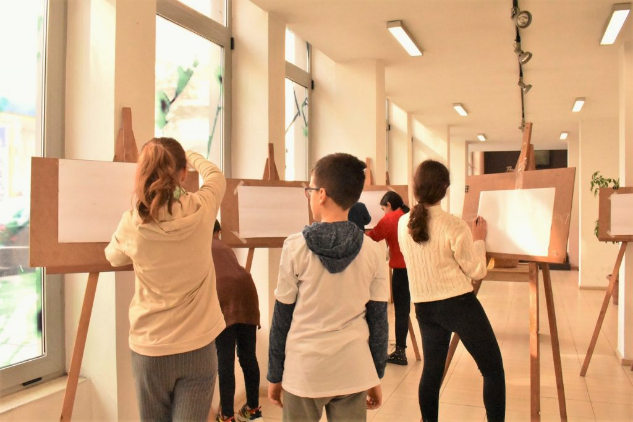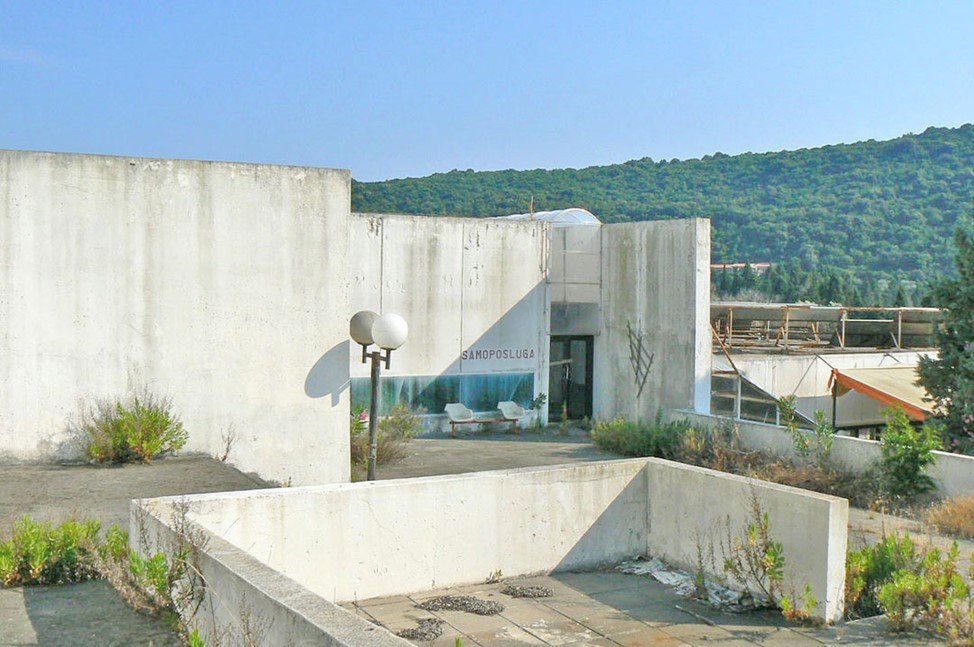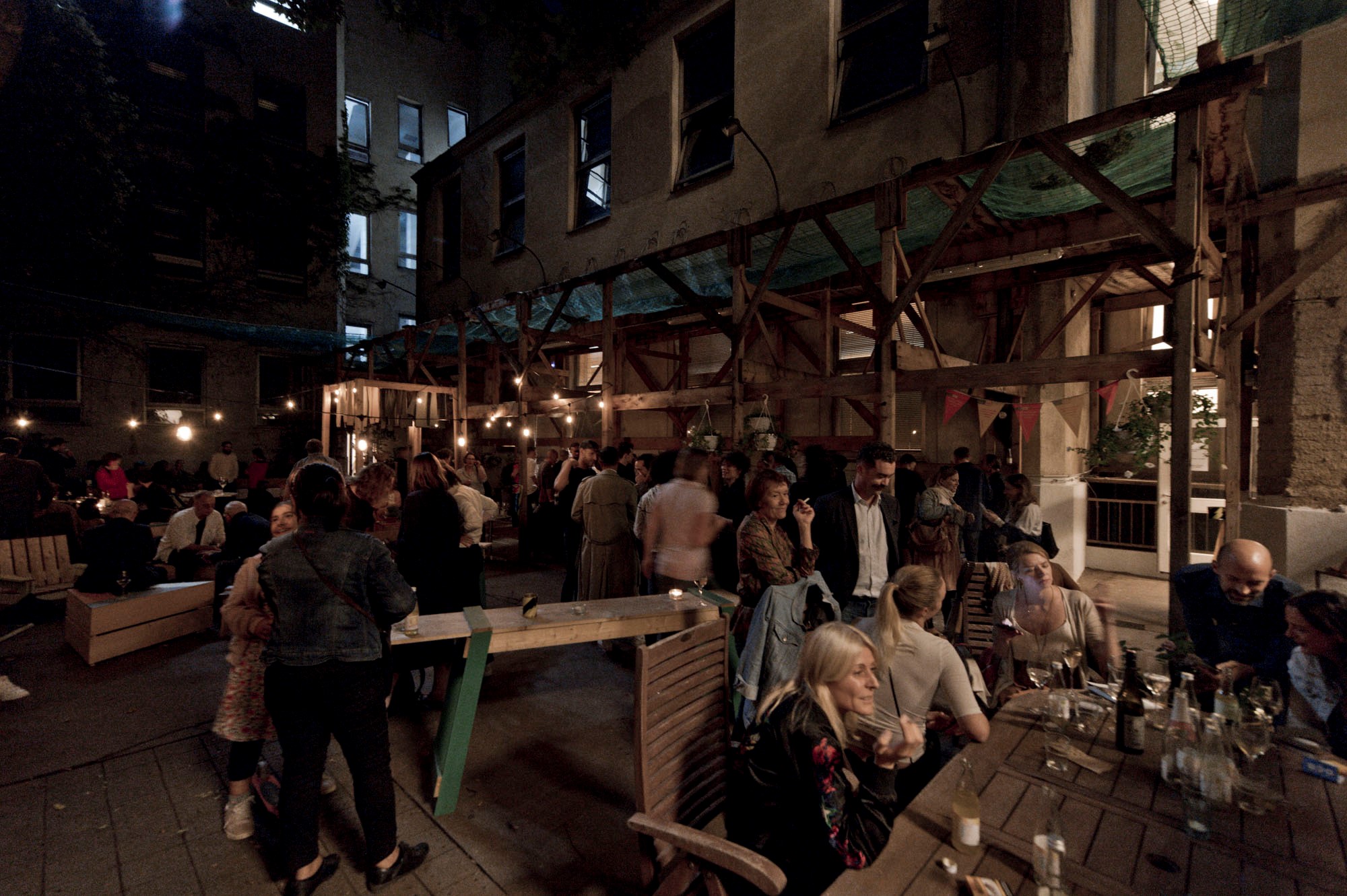The selected ‘’vacant space’’ is as a case study which has been used as a cinema. For a period of more than 10 years this space was not used. With the initiative of the Municipality of Tirana, in cooperation with a construction company, in 2010 this building was turned into a multifunctional center at the service of residents for residential purposes and beyond. The purpose of selecting the former Dajti Cinema as a case study relates with:
- Conversional of a non-functional space, from unused area into an area in function of the community.
- Its reconstruction improved the landscape of the area in which it is located.
- From its conversion can benefit not only the residents but the whole citizens in the city.
- It is located almost in the centre of the city of Tirana. This makes it quite accessible for residents.
- Located on the side of a pedestrian street with commercial function which affects the increase in the number of users.
- It is a case that is rarely found in Tirana.
The conversion of the former Dajti Cinema to the multifunctional centre was an initiative of the Municipality of Tirana which sub-contracted and financed a construction company for the rehabilitation of the building. The beneficiaries of this investment are mainly young people and children who use the reconstructed premises for multiple activities. This case study has been selected as a positive and successful example of turning ‘’vacant space’’ into functional environments by serving the needs of the community and improving the landscape and space in which this building is located.
The territory in which the former Dajti Cinema is located is very close to the city centre of Tirana. The centre of the city is the area with the highest construction density in the city. Existing buildings are mainly apartments and offices. There is a lack of recreational, entertaining, and creative spaces. In this situation, the creation of entertainment, artistic and creative environments would fill a gap and a demand of the inhabitants of the area and the city.
The vacant space is a relatively old building previously used for cinemas that who did not have any use for a period of 10-15 years. Furthermore, the lack of investment and use in due time worsen it condition.
The vacant space was not used because there were many cinemas in the city of Tirana and gradually their attendance began to decrease. At one point some cinemas who were not frequented spontaneously were converted to vacant environments.

Challenges and Opportunities
Challenges: This building is owned by the Municipality of Tirana. Due to the lack of financial resources, the reconstruction of this building as a multifunctional community centre was not carried out for a period longer than 10 years. The lack of ideas and willingness of the local/central authorities for such investment had left unused and in degradation this building although artistic, entertainment and cultural environments for children and youth were lacking in this area and in the city.
Opportunities: The conversion of the vacant space into functional use area for young people and children was a relatively new experience for the city. The rehabilitated area is used from young people for different activities, mainly focused in the field of art, culture and science. The building was divided into smaller rooms and each environment had a specific function such as library, dance, musical instruments, paintings, theatrical performances, etc. Reconstruction and reuse of this building turned it into an added value for the area in which it was located.
- Governance of vacant spaces: The realization of this change was made possible by the investment of the municipality of Tirana which contacted a private construction company. The investment was financed from the municipal budget and is owned by the municipality. The functions are designed to meet the demands and needs of the inhabitants of the area. In addition, many different actors as NGOs, can use it for their own activity.
- Institutional Framework: In this case study the legal aspects are ownership which remains unchanged and the approval of the reconstruction and change of use permit which have been approved by the municipality of Tirana.
- Financial context: Currently in Tirana there are no specific taxes for unused premises. In this case, the municipality was the initiator of this process, which selected the construction company that would enable this intervention.
Lessons Learned
What is the space-reuse idea? The idea of reusing is to turn the building from an ‘’vacant space’’ into a widely used community building.
What is the financial and organisational model behind? Funding is public.
How can it be relevant for youngsters in peripheral areas? In the suburban areas there may be buildings that previously had an industrial function. Often these buildings are illegally occupied by residents. They can be turned into spaces for the benefit of the communities of these areas.
Can youngsters replicate the model? If yes, how? If not, who is needed to implement it? Young people can reproduce the model but need financial support
How does the project create justice?
What is the benefit for the people in the area? Residents in these areas, especially young people and children, carry out various activities that they could not carry out before, especially near the area where they lived.
What is the contribution to the Planet (environment)? The use of the building avoids its degradation and consequently the damage to the environment and at the same time improves the appearance of the street where this building is located.
What is the financial outcome (profit, capacity building, …)? Residents of the area should not go far from their homes to carry out these activities for children and young people but will develop them near their homes.
What is the local impact of the project? The impact of the intervention is the activation of young people and children, the active spending of free time, the promotion and creation of new talents, etc.



